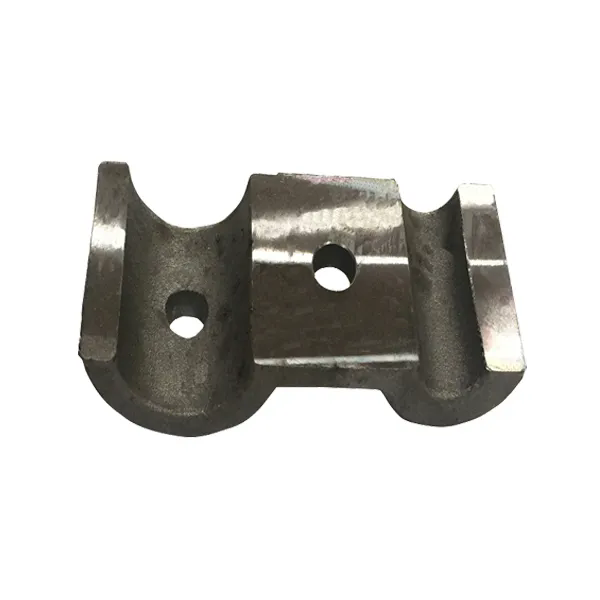
Lost foam casting has emerged as a highly efficient and cost-effective method for producing complex metal parts. This technique, which involves creating a foam pattern that "disappears" or vaporizes during casting, has gained popularity due to its flexibility and ability to create intricate designs. But what makes lost foam casting such an exciting and innovative choice for manufacturers? In this blog, we’ll dive into the key reasons lost foam casting is transforming the manufacturing landscape.

Lost foam casting is a process that starts with a foam model, usually made from polystyrene, which is then coated in a refractory material to withstand high temperatures. Once the foam is encased in a sand mold, molten metal is poured in, causing the foam to vaporize as the metal takes its place. This process allows for high-precision casting of complex shapes without the need for additional molding components.
One of the primary benefits of lost foam casting is its ability to create parts with complex geometries. Since the foam pattern can be precisely carved or molded, even intricate designs can be achieved with minimal machining. Manufacturers often choose lost foam casting for parts that would be difficult or impossible to produce through other casting methods.
Lost foam casting is especially beneficial for parts with intricate internal cavities, undercuts, or delicate details. Traditional casting methods may require complex mold setups or multi-step processes to achieve these shapes, but lost foam casting simplifies production while enhancing design freedom.
Lost foam casting offers superior surface finish and dimensional accuracy. The foam pattern’s smooth surface transfers directly to the metal, resulting in a cleaner finish and requiring less post-processing. This means parts often need little to no additional finishing work, saving time and cost for manufacturers.
Since the sand surrounding the foam supports the entire casting process, lost foam casting minimizes the need for risers, cores, and additional support materials, which can disrupt the surface. The result is a near-net shape casting with tight tolerances and consistent quality.
Lost foam casting is known for its cost-effectiveness, especially in high-volume production. Here’s how it delivers cost savings:
- Reduced Machining and Finishing: With minimal post-processing required, manufacturers save on labor and machining costs.
- Simplified Mold Setup: Lost foam casting doesn’t require separate cores or other mold inserts, which lowers tooling costs.
- Lower Material Waste: Since the foam pattern completely vaporizes, there’s no need for complex gating or riser systems, reducing material waste.
These savings make lost foam casting an attractive option for industries such as automotive, aerospace, and machinery, where high-quality, high-volume production is often essential.
Environmental sustainability is a growing concern in manufacturing, and lost foam casting offers several eco-friendly advantages:
- Lower Energy Use: With fewer steps involved, the process requires less energy compared to traditional casting methods.
- Reduced Waste: Foam patterns are fully consumed in the casting process, minimizing excess waste.
- Recyclable Sand: The sand used in lost foam casting can often be reused, reducing waste and lowering costs.
Lost foam casting aligns well with sustainable manufacturing goals, making it a favorable option for companies looking to reduce their environmental impact.
Despite its many benefits, lost foam casting does have some limitations. Here are a few challenges manufacturers might encounter:
- Pattern Production Time: Creating the initial foam pattern can be time-consuming, particularly for highly detailed parts, and may require specialized equipment.
- Foam Pattern Fragility: The foam pattern is relatively delicate, which can make it challenging to handle during the setup process.
- Material Restrictions: While lost foam casting works well with metals like aluminum and steel, some alloys may not be as suitable due to their specific melting and vaporization properties.
Manufacturers typically weigh these limitations against the cost savings and precision benefits to determine if lost foam casting is the best option for their needs.
Lost foam casting has found applications across a variety of industries, especially those requiring highly precise metal components.
- Automotive Industry: Lost foam casting is widely used for producing complex parts such as engine blocks, cylinder heads, and manifolds. The method allows manufacturers to produce lightweight, high-strength components while meeting strict design and tolerance standards.
- Aerospace: Aerospace components often require lightweight materials and complex geometries. Lost foam casting provides aerospace manufacturers with the freedom to create intricate parts while maintaining the strength and integrity needed in flight components.
- Machinery and Industrial Equipment: Lost foam casting is also widely used in machinery manufacturing, particularly for parts that require internal cavities or other complex structures, such as pumps, valves, and housings.
- Art and Design: Beyond industrial uses, artists and designers also use lost foam casting to create intricate sculptures and decorative pieces. The technique allows for artistic freedom and creativity, translating designs from foam to metal with impressive detail.
Lost foam casting has become a revolutionary technique for manufacturing industries due to its ability to produce complex shapes with high precision, excellent surface finishes, and at a lower cost. Its eco-friendly attributes also make it appealing in today’s environmentally conscious market. While the process has certain limitations, it continues to evolve with technological advancements, making it a valuable method for producing high-quality metal parts in various industries.
As demand grows for intricate and high-performance components, lost foam casting’s role in modern manufacturing is likely to expand, influencing the way parts are designed, produced, and utilized across industries.
Ningbo Yinzhou Keming Machinery Manufacturing Co., Ltd. is a company that specializes in providing quality Lost Foam Casting to clients worldwide. Visit our website at https://www.kmcast.com/ to learn more about our products.